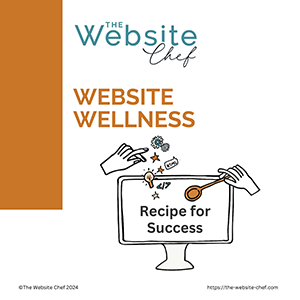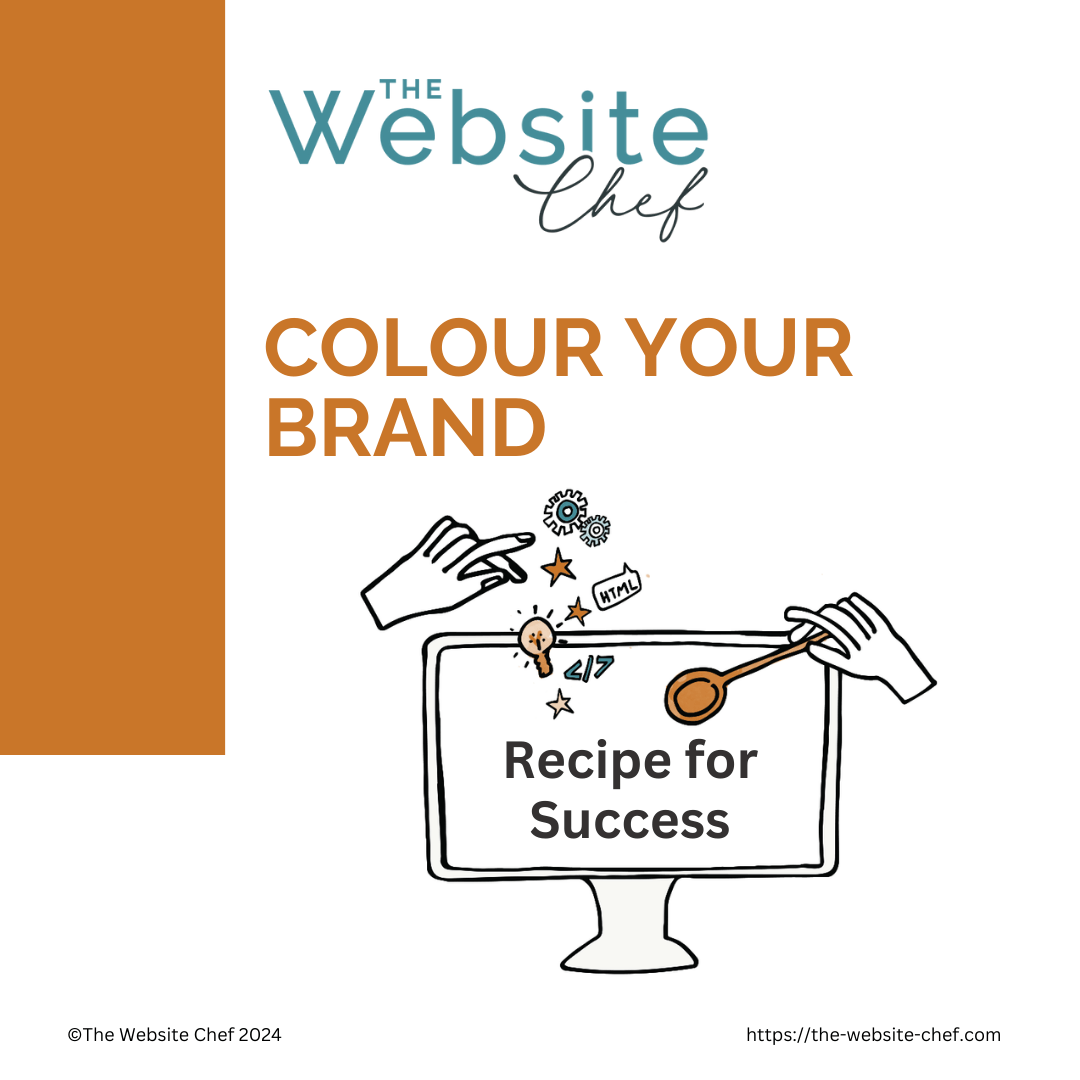New Business Recipe for Success
Congratulations on starting your journey as an entrepreneur! Whether you’ve already taken the plunge or are still weighing your options, it’s time to dive into some practical tasks that will set you up for success. Defining your business personality is crucial for effective marketing and attracting the right clients. Let’s walk through some key steps to help you get there.
- Business Name
- Have you decided on a name for your business? If yes, proceed to Item 2.
- If no, here are some things to keep in mind:
- Choose a name that appeals to you and that will appeal to the type of customers you want to attract.
- Keep it short and clear and memorable. And make sure it’s easy for people to spell!
- Decide what you want the name to communicate. It should reinforce the key elements of your business.
- As an entrepreneur it’s easy to think in terms of using your name for your business. Think big! What if you decide to sell your business in a few years?
- Tips for Registering Your Business Domain
- Lock in Your Domain Name Early: Just like picking out the perfect ingredients, securing your domain name is the first step to a successful website. Once you’ve chosen a name for your business, go ahead and register the domain, even if you’re not ready to build the website yet. Think of it as reserving a special ingredient before it sells out! You can always add the hosting later. By grabbing your domain now, you ensure no one else snags it before you do.
- Choosing a Domain Registrar: Next, you’ll need a reliable source for your domain, much like finding a trusted grocery store for your kitchen needs. You can register your domain through websites like DreamHost, Name.com, Register365, or even through your hosting company. Keep in mind, registering your domain involves an annual cost, so be aware of renewal rates. Registrars often offer a low initial rate that can rise after the first term. Some clients have found making changes with Google Domains to be quite challenging, so consider this when choosing your registrar.
Further reading: My Hosting & Domains Recipe for Success
- Business Colours
- Pick the Right Colours: What colours are you using to represent your business? Do they reflect the image you want to convey?
- Get Expert Help: If you’re unsure about which colours to choose, your graphic designer can offer great suggestions. Remember, colours evoke different feelings and associations in people’s minds, such as trust, luxury, or earthiness.
Further Reading: Colour Your Brand Recipe for Success
- Brand Values
- Identifying your brand values is a crucial part of building your business foundation. These values will guide you through any challenges that arise and help you attract the perfect clients.
Further reading: Brand Values Recipe for Success
- Crafting the Perfect Tagline
- What’s a Tagline? A tagline is a short sentence that describes your business or what sets you apart from your competitors. Think of De Beers’ “A Diamond is Forever,” Nike’s “Just Do It,” or Apple’s “Think Different.”
- How to Create One: Start by writing a couple of sentences about your business. Then, refine it a few times until it’s short and catchy.
- Where to Use It: Your tagline will be used on flyers, stationery, signs, business cards, social media, and your website. It’s a chance to grab attention and make customers want to learn more.
- Another Approach: List the unique features and benefits of your service or product. Identify what makes you stand out from competitors. Then, create a short, concise phrase that captures the essence of your business.
- Logo
- Keep It Simple: A logo isn’t essential for your business, and it doesn’t have to be a complicated image. It can simply be the consistent way you write your business name, using the same font and colour. I love the idea of signature logos blended with a drawing, like a camera for a photographer.
- Hire a Graphic Designer: Ideally, you should hire a graphic designer to create your logo. They can take the information you’ve developed (like values, colours, and mission) and create a logo that ties everything together. The right fonts, colours, and styles will create a cohesive look for your business, making it instantly recognizable. Check out my Resources page for my favourite graphic designer/illustrator.
- DIY Options: If you’re on a tight budget, https://www.designevo.com/ is a great place to start. It offers inspiration and allows you to create your own logo from a variety of designs. Canva.com also has customizable logos. These tools are helpful for starting out, but investing in a professional graphic designer is a great long-term move for building a strong foundation for your business.
- Font
Deciding on which font to use will help convey your business personality. Your choice of clothes says something about you. Well, so does your choice of font. This blog post is a good starting point: https://www.crazyegg.com/blog/finding-the-right-font/
- There are generally four types of fonts to consider: serif, sans-serif, display and handwriting.
- Serif are the fonts that have little ‘feet’ like Times Roman. These tend to be associated with words like tradition, respectable, reliable, comfort.
- San-serif are clean with no embellishments.
- Display are fonts that are good headline fonts with lots of impact.
- Handwriting fonts are also known as cursive and resemble handwriting, as the name implies.
- This resource has a good description of what the various font styles say about you. https://www.crazyegg.com/blog/psychology-of-fonts-infographic/
- If you’re a wedding florist you might prefer a flowery, ornate font. That same font wouldn’t work if you’re a steel manufacturer or a plumber.
- It’s good to pick two fonts, one for headings and the second for the body. You’ll use these in the same types of documents mentioned above (flyers, stationary, website, etc.). Or you can use one font but using different styles like italics and all caps to make it more interesting.
- Canva has a great resource about pairing fonts that I highly recommend. https://www.canva.com/learn/the-ultimate-guide-to-font-pairing/
- You can find lots of free fonts at https://fonts.google.com/
- Choosing the Right Images for your Business
- Why It Matters: Deciding on the types of images to represent your business not only fits into your brand personality but also makes your marketing efforts much easier.
- Photographs or Illustrations?: Will you use photographs or illustrations to showcase your business?
- Selecting Photos: If you choose photos, consider what types will best represent your business. Finding the right images for a service business without physical products can be challenging. You might show happy clients using your service or photos of you and your team at work.
- Choosing Illustrations: If you prefer illustrations, think about the types of images you need. Determine whether you can find suitable stock images or if you’ll need to commission a graphic artist.
- Image Specifications: Before commissioning artwork or purchasing photos, know what size images you’ll need. Different uses (flyers, stationery, signs, business cards, social media, and your website) require different sizes and resolutions. Check out my Images and Video Guide for sources of stock photos and videos you can use. Also, talk to your web designer to see if they have any specific image requirements for your website.
Further reading: My Images and Videos Recipe for Success
- Social Media Presence
- Save Your Name: Even if you’re not ready to dive into social media, it’s smart to reserve your business name on various social platforms like Facebook, Instagram, Twitter, etc. This ensures no one else can use your name.
- Creating a Facebook Page: Log into Facebook with your personal profile and create a Page for your business. Once it’s created, click Publish to save it. You can then unpublish the Page until you’re ready to set it up properly and start using it.
- Twitter and Instagram: You can set up accounts on Twitter and Instagram and simply leave them dormant until you’re ready to use them.
- Time to Plan your Website
- Now that you’ve got the foundations set up, it’s time to start planning your website. Check out my Website Planning Recipe for Success.
Download a pdf version for reference.








